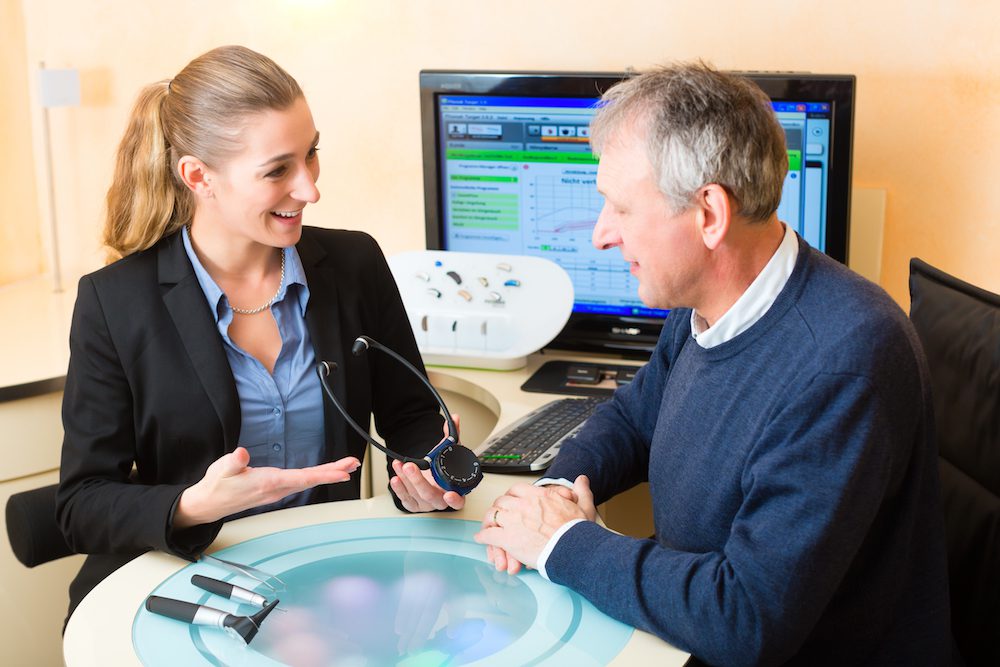The Impact of Hearing Loss on Job Performance and Career
Hearing loss can subtly influence various aspects of your life, including

By: admin | November 21, 2022
If you’ve been recently diagnosed with hearing loss, you may be wondering what treatment options are available to you. Hearing aids are the first course of treatment, with these devices ranging in styles, sizes and features, making them customizable for most cases of mild-to-profound hearing loss.
However, hearing aids aren’t the only way you can manage your loss, there are other assistive devices and methods available to address your issues. No matter what method you choose, it is important to find a way to manage your hearing loss so that you can continue living a normal life.
One of the most common ways to manage hearing loss is by wearing a hearing aid. Hearing aids are small devices that are worn in the ear and help amplify sound. This can be extremely beneficial for people who have difficulty hearing conversations or other sounds. Hearing aids can also help improve your balance and coordination and reduce your risk of falling.
If you are considering wearing a hearing aid, it is important to consult with an audiologist to find a suitable device for you. There are many different types of hearing aids available on the market, so it is important to find one that will work best for your individual needs. The most common hearing aid styles include: in the canal (ITC), in the ear (ITE), behind the ear (BTE), invisible in canal (IIC) and completely in canal (CIC). Your audiologist will provide you with the right recommendations for your specific set of needs, whether they are aesthetic, case based or budgetary.
Assistive listening devices (ALDs) are devices that can amplify sound and make it easier to hear. They can be beneficial for people who have difficulty hearing conversations or other sounds.
Common ALDs include personal amplifiers, FM systems and induction loop systems. Personal amplifiers are small devices that you can wear around your neck, amplifying sound so you can hear better. FM systems use radio frequencies to transmit sound directly to your ear, and induction loop systems use a wire that goes around the perimeter of a room to transmit sound.
Lip reading is a skill that can be highly beneficial for people who are deaf or hard of hearing. It is a way of “reading” someone’s lips to understand what they are saying. Lip reading can be difficult, but there are many different ways to learn this skill. For example, you can take classes to learn how to lip-read, or you can watch videos online. There are also apps that can help you practice lip reading, such as “Lip Reading Tutor” and “Lip Reading Challenge.”
Captioning is another excellent way to manage hearing loss. Captioning is when text is displayed on a screen that shows what is being said. This can be very beneficial for people who have difficulty hearing conversations or other sounds.
Different types of captioning are available, such as open and closed captioning. Open captioning is when the text is always visible, while closed captioning is when the text is only visible when you activate it. In addition, some apps can provide captioning, such as “Live Caption” and “Avaz.”
A telecommunications relay service (TRS) is a service that allows people who experience hearing loss to communicate with people who can hear. It works by having a third person act as a relay between the two people.
There are many different ways to use a TRS, such as using a text-based system or an audio-based system. Text-based systems allow you to type out what you want to say and have it translated into speech. Audio-based systems will enable you to talk on the phone and have your conversation relayed through a third person.
Another great way to manage more severe hearing loss is by using sign language. Sign language is a form of communication that uses hand gestures and body language to communicate. There are many ways you can learn sign languages, so it is important to find one you are comfortable with. For example, you can take classes to learn sign language, which can be beneficial if you plan on using it regularly.
If you are communicating with someone who does not know sign language, there are many different ways to bridge the communication gap. For example, there are devices called “voice-to-text” that allow you to type out what you want to say and have it translated into text on the other person’s device.
These are just a few of the most common methods to manage hearing loss. If you struggle to communicate due to hearing loss, many different resources are available to help you. Don’t hesitate to reach out to Advanced Hearing of Brighton at 810-355-2245.
Tags: faqs, hearing loss management tips

Hearing loss can subtly influence various aspects of your life, including
By: admin | February 28, 2024

Our understanding of hearing loss and its treatment with hearing aids has
By: admin | December 28, 2023

In industries where loud machinery is a constant presence, it’s
By: admin | November 25, 2023
